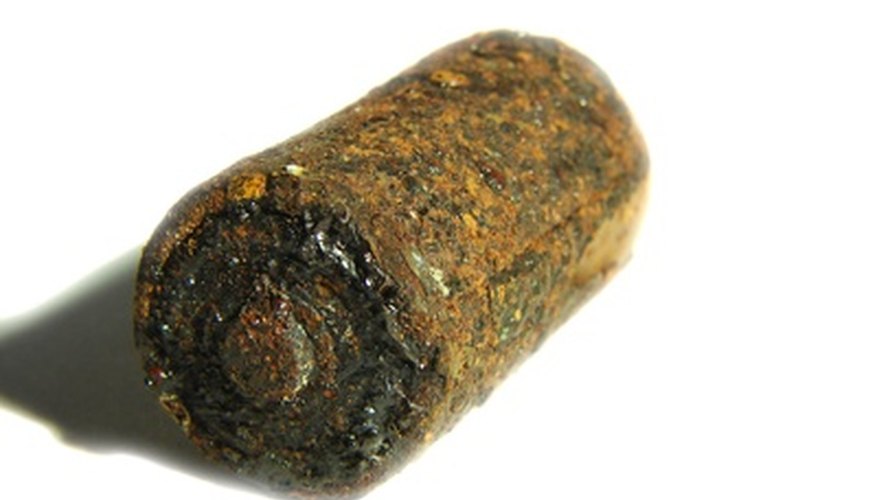When a battery cell is damaged, the acid contained in the battery leaks out and eats away at the exterior metal. Corroded batteries can burn skin and should be removed and disposed of to prevent harm. Unfortunately, most batteries end up in landfills due to inefficient recycling processes. This releases harmful heavy metals into the environment, tainting the air, ground and water. You can find a recycling centre near you to prevent pollution resulting from corroded batteries.
- When a battery cell is damaged, the acid contained in the battery leaks out and eats away at the exterior metal.
- Corroded batteries can burn skin and should be removed and disposed of to prevent harm.
Put on gloves to protect your hands from the acid.
Remove the damaged battery from the device it powered.
Seal the battery in a plastic bag and throw in the trash. The government classifies these as non-toxic waste, so it's OK to toss them. Once recycling plants find a way to profitably recycle these types of batteries, recycling will be the best option, but currently most plants won't accept them.
- Seal the battery in a plastic bag and throw in the trash.
- Once recycling plants find a way to profitably recycle these types of batteries, recycling will be the best option, but currently most plants won't accept them.
Put on gloves to protect your hands.
- Put on gloves to protect your hands.
Place the damaged battery in a resealing plastic bag.
Bring button batteries (such as those found in watches, remote controls or hearing aids), sealed lead acid batteries and nickel-cadmium batteries to a Household Hazardous Waste Collection Site, as they are classified as hazardous waste and should not be placed in landfills.
Find a Hazardous Waste Collection site near you by searching for "Hazardous Waste Collection Site" and the name of your town. Links will appear providing information about the proper location.
Put on gloves to protect your hands.
- Put on gloves to protect your hands.
Place damaged batteries in a sealable plastic bag.
Take lithium ion, nickel metal hydride and silver oxide batteries to a recycling centre. Check the resource below to find your nearest recycling centre.
Put on gloves to protect your hands.
- Put on gloves to protect your hands.
Place the damaged battery in a plastic bag.
Bring vehicle batteries back to the store you purchased them from. Most retailers will take them back to be recycled.
TIP
If you live in California, you must adhere to the California Universal Waste Rules. This means that batteries must be taken to a recycling facility, household hazardous waste-disposal site or a universal waste handler.
WARNING
There may be a fee at recycling centres. Some areas only accept hazardous waste at certain times.
